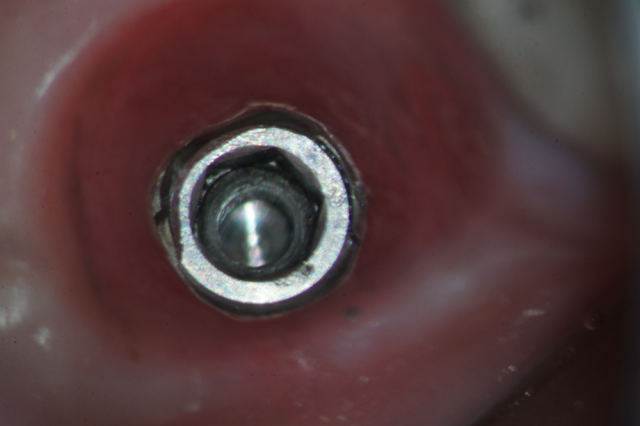At Spear Education we often say that when we see something happening we better ask ourselves why what we are seeing is happening. This is especially true when it is happening repeatedly.
The reason of course behind needing to know the “why” is that if we don’t figure it out and the root cause is not addressed, we can expect it to happen again and again. Besides the frustration of dealing with the same problem over and over the root cause will continue and may result in a bigger problem.
Today I would like to share a case I saw in my office that illustrates the importance of continuing to look for the “why,” as there may be more than one why.
Being that I practice in Tucson, Ariz., it is not uncommon for us to see patients from time to time who are visiting or wintering in Tucson and have a regular dentist in another city, state or even country. Given this norm, it was no surprise when a winter visitor presented to my office for an emergency visit to tighten a loose implant crown. Interestingly, the crown had come loose before and, although it started as a cemented restoration, it had been converted to a screw-retained restoration. The good news for me was this made my job easy.
At the time of this encounter, our “why” seemed to most likely be some occlusal issues. Thus we decided to simply relieve the occlusion a bit on the restoration, put it back in place and then have the patient follow-up with her dentist when she returned home.
Fast forward almost exactly two years to the day and we had this patient back in our office with the same thing going on. Of course this got me thinking that clearly something is still going on and the “why” was not resolved. She had followed up with her dentist back home and he had done even more reshaping of the restoration as the restoration had come loose at least one more time since I had seen her. This got me thinking even harder, and I became worried as to the status of the implant to restoration interface. If it had become damaged as the patient was now reporting, she basically knew if she “crunched” anything real hard on that side she could “knock” the restoration loose.
You can imagine our disappointment when we removed the restoration and saw the damage to not only the implant platform (Figure 1) but also the interface of the restoration (Figure 2).


As we have stated here, we obviously have to ask ourselves “why” this happened. Did occlusion play a role or was there a failure of the implant structure? While I don’t think we will ever know the answer for sure, I think the most likely answer is that the restoration coming loose and getting functioned on both damaged and overstressed the implant.
The next question of course would be was it just the occlusal issues that caused the loosening or was it that in combination design of the implant platform? While we will never be sure of that either, I would lean toward a combination of the two. I also suspect there could easily be some extra parafunctional issue as I know that her regular dentist is a great clinician.
We have all had or will have cases where is it hard to figure out the “why.” As I stated earlier there can be more than one. The most important thing to do is keep ourselves open to finding more “whys.”
(Click this link for more dentistry articles by Dr. John Carson.)
John R. Carson, D.D.S., P.C., Spear Visiting Faculty and Contributing Author - www.johncarsondds.com
SEMINAR: Implants - The Surgical/Restorative Connection
Ready to ensure your practice stays ahead of the curve? Implants are rapidly becoming part of everyday dentistry. Attend this this two-day course to explore the essentials of treatment planning, placement and restoration of dental implants in both simple and complex implant reconstructions.
LEARN MORE